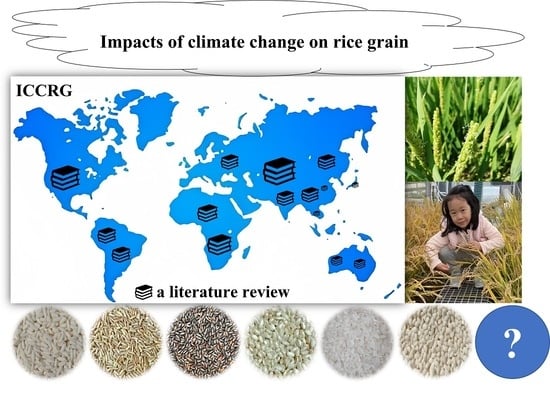Impacts of Climate Change on Rice Grain: A Literature Review on What Is Happening, and How Should We Proceed?
Abstract
1. Introduction
2. Materials and Methods
2.1. Data Sources and Screening
2.2. Analytical Methods
3. Results
3.1. The Developing Concern with the ICCRG
3.2. The concerning Themes in Studying the ICCRG
3.2.1. Themes Reflected by Keyword Clusters
3.2.2. Themes Reflected by Item Clusters
3.2.3. Themes Reflected by Keyword Burst
3.3. Involving Areas in the Studies on ICCRG
3.4. International Distributions and Collaborations in ICCRG Studies
4. Discussion
4.1. What Is Happening?
4.1.1. Rising Concentrations of Atmospheric Carbon Dioxide and the Fertilization Effect
4.1.2. Field-Experiment-Based Observations and Model Simulations
4.1.3. Global Warming and Extreme Weather as Reflected by Different Types of Temperature Increases
4.1.4. Interdisciplinary Studies on the ICCRG
4.2. How Should We Proceed?
4.2.1. Field Observations with Improved Experiential Design Should Be Conducted
4.2.2. International Cooperation Should Be Strengthened
4.2.3. ICCRG from the Economic Perspective
5. Conclusions
Author Contributions
Funding
Institutional Review Board Statement
Informed Consent Statement
Data Availability Statement
Conflicts of Interest
Abbreviations
References
- Food and Agriculture Organization (FAO). The State of Food Security and Nutrition in the World 2022; Food and Agriculture Organization (FAO): Rome, Italy, 2022. [Google Scholar]
- Zhao, M.; Lin, Y.; Chen, H. Improving nutritional quality of rice for human health. Theor. Appl. Genet. 2020, 133, 1397–1413. [Google Scholar] [CrossRef] [PubMed]
- Tang, L.; Risalat, H.; Cao, R.; Hu, Q.; Pan, X.; Hu, Y.; Zhang, G. Food Security in China: A Brief View of Rice Production in Recent 20 Years. Foods 2022, 11, 3324. [Google Scholar] [CrossRef] [PubMed]
- Elert, E. Rice by the numbers: A good grain. Nature 2014, 514, S50–S51. [Google Scholar] [CrossRef] [PubMed]
- Khush, G.S. Origin, dispersal, cultivation and variation of rice. Plant Mol. Biol. 1997, 35, 25–34. [Google Scholar] [CrossRef]
- Callaway, E. Domestication: The birth of rice. Nature 2014, 514, S58–S59. [Google Scholar] [CrossRef]
- Wahid, M.A.; Irshad, M.; Irshad, S.; Khan, S.; Hasnain, Z.; Ibrar, D.; Khan, A.R.; Saleem, M.F.; Bashir, S.; Alotaibi, S.S.; et al. Nitrogenous Fertilizer Coated with Zinc Improves the Productivity and Grain Quality of Rice Grown Under Anaerobic Conditions. Front. Plant Sci. 2022, 13, 914653. [Google Scholar] [CrossRef]
- Fukugawa, N.K.; Ziska, L.H. Rice: Importance for Global Nutrition. J. Nutr. Sci. Vitaminol. 2019, 65, S2–S3. [Google Scholar] [CrossRef]
- Custodio, M.C.; Cuevas, R.P.; Ynion, J.; Laborte, A.G.; Velasco, M.L.; Demont, M. Rice quality: How is it defined by consumers industry, food scientists, and geneticists? Trends Food Sci. Technol. 2019, 92, 122–137. [Google Scholar] [CrossRef]
- Das, P.; Adak, S.; Majumder, A.L. Genetic Manipulation for Improved Nutritional Quality in Rice. Front. Genet. 2020, 11, 776. [Google Scholar] [CrossRef]
- Intergovernmental Panel on Climate Change (IPCC). Climate Change 2022: Impacts, Adaptation, and Vulnerability; Intergovernmental Panel on Climate Change (IPCC): Geneva, Switzerland, 2022. [Google Scholar]
- Pörtner, H.O.; Roberts, D.C.; Adams, H.; Adler, C.; Aldunce, P.; Ali, E.; Begum, R.A.; Betts, R.; Kerr, R.B.; Biesbroek, R.; et al. Food, Fibre, and Other Ecosystem Products. In Climate Change 2022: Impacts, Adaptation, and Vulnerability; Contribution of Working Group II to the Sixth Assessment Report of the Intergovernmental Panel on Climate Change; Intergovernmental Panel on Climate Change (IPCC): Geneva, Switzerland, 2022. [Google Scholar] [CrossRef]
- Zhang, G.; Sakai, H.; Tokida, T.; Usui, Y.; Zhu, C.; Nakamura, H.; Yoshimoto, M.; Fukuoka, M.; Kobayashi, K.; Hasegawa, T. The effects of free-air CO2 enrichment (FACE) on carbon and nitrogen accumulation in grains of rice (Oryza sativa L.). J. Exp. Bot. 2013, 64, 3179–3188. [Google Scholar] [CrossRef]
- Zhang, G.; Sakai, H.; Usui, Y.; Tokida, T.; Nakamura, H.; Zhu, C.; Fukuoka, M.; Kobayashi, K.; Hasegawa, T. Grain growth of different rice cultivars under elevated CO2 concentrations affects yield and quality. Field Crops Res. 2015, 179, 72–80. [Google Scholar] [CrossRef]
- Hasegawa, T.; Sakai, H.; Tokida, T.; Usui, Y.; Nakamura, H.; Wakatsuki, H.; Chen, C.P.; Ikawa, H.; Zhang, G.; Nakano, H.; et al. A High-Yielding Rice Cultivar Takanari Shows No N Constraints on CO2 Fertilization. Front. Plant Sci. 2019, 10, 361. [Google Scholar] [CrossRef]
- Ikawa, H.; Sakai, H.; Chen, C.P.; Soong, T.H.; Yonemura, S.; Taniguchi, Y.; Yoshimoto, M.; Tokida, T.; Zhang, G.; Kuwagata, T.; et al. High mesophyll conductance in the high-yielding rice cultivar Takanari quantified with the combined gas exchange and chlorophyll fluorescence measurements under free-air CO2 enrichment. Plant Prod. Sci. 2019, 22, 395–406. [Google Scholar] [CrossRef]
- Zhang, G.; Ujiie, K.; Yoshimoto, M.; Sakai, H.; Tokida, T.; Usui, Y.; Wakatsuki, H.; Arai, M.; Ikawa, H.; Nakamaura, H.; et al. Daytime warming during early grain filling offsets the CO2 fertilization effect in rice. Environ. Res. Lett. 2022, 17, 114051. [Google Scholar] [CrossRef]
- Zhang, G.; Kobayashi, K.; Wu, H.; Shang, B.; Wu, R.; Zhang, Z.; Feng, Z. Ethylenediurea (EDU) protects inbred but not hybrid cultivars of rice from yield losses due to surface ozone. Environ. Sci. Pollut. Res. 2021, 28, 68946–68956. [Google Scholar] [CrossRef]
- Zhang, G.; Risalat, H.; Kobayashi, K.; Cao, R.; Hu, Q.; Pan, X.; Hu, Y.; Shang, B.; Wu, H.; Zhang, Z.; et al. Ethylenediurea reduces grain chalkiness in hybrid rice cultivars under ambient levels of surface ozone in China. Front. Plant Sci. 2022, 13, 983576. [Google Scholar] [CrossRef]
- Zhang, G.; Hu, Q.; Cao, R.; Fu, R.; Risalat, H.; Pan, X.; Hu, Y.; Shang, B.; Wu, R. Yield loss in rice by acute ozone pollution could be recovered. Agric. Environ. Lett. 2022, 7, e20093. [Google Scholar] [CrossRef]
- Todhunter, P.E.; Mearns, L.O.; Terjung, W.H.; Hayes, J.T.; Ji, H.-Y. Effects of Monsoonal Fluctuations on Grains in China. Part I: Climatic Conditions for 19611975. J. Clim. 1989, 2, 5–17. [Google Scholar] [CrossRef]
- Terjung, W.H.; Mearns, L.O.; Todhunter, P.E.; Hayes, J.T.; Ji, H.-Y. Effects of Monsoonal Fluctuations on Grains in China. Part II: Crop Water Requirements. J. Clim. 1989, 2, 19–37. [Google Scholar] [CrossRef]
- Chen, C. Searching for intellectual turning points: Progressive knowledge domain visualization. Proc. Natl. Acad. Sci. USA 2004, 101, 5303–5310. [Google Scholar] [CrossRef] [PubMed]
- Chen, C. CiteSpace II: Detecting and visualizing emerging trends and transient patterns in scientific literature. J. Am. Soc. Inf. Sci. Technol. 2006, 57, 359–377. [Google Scholar] [CrossRef]
- Jagadish, S.V.K.; Murty, M.V.R.; Quick, W.P. Rice responses to rising temperatures - challenges perspectives and future directions. Plant Cell Environ. 2014, 38, 1686–1698. [Google Scholar] [CrossRef]
- Lobell, D.B.; Sibley, A.; Ortiz-Monasterio, J.I. Extreme heat effects on wheat senescence in India. Nat. Clim. Change 2012, 2, 186–189. [Google Scholar] [CrossRef]
- Sánchez, B.; Rasmussen, A.; Porter, J.R. Temperatures and the growth and development of maize and rice: A review. Glob. Change Biol. 2013, 20, 408–417. [Google Scholar] [CrossRef]
- Chen, X.; Cui, Z.; Fan, M.; Vitousek, P.; Zhao, M.; Ma, W.; Wang, Z.; Zhang, W.; Yan, X.; Yang, J.; et al. Producing more grain with lower environmental costs. Nature 2014, 514, 486–489. [Google Scholar] [CrossRef]
- Zhu, T.; Lima, C.F.F.D.; Smet, I.D. The heat is on: How crop growth development, and yield respond to high temperature. J. Exp. Bot. 2021, 72, 7359–7373. [Google Scholar] [CrossRef]
- Zhao, C.; Liu, B.; Piao, S.; Wang, X.; Lobell, D.B.; Huang, Y.; Huang, M.; Yao, Y.; Bassu, S.; Ciais, P.; et al. Temperature increase reduces global yields of major crops in four independent estimates. Proc. Natl. Acad. Sci. USA 2017, 114, 9326–9331. [Google Scholar] [CrossRef]
- Bahuguna, R.N.; Solis, C.A.; Shi, W.; Jagadish, K.S.V. Post-flowering night respiration and altered sink activity account for high night temperature-induced grain yield and quality loss in rice (Oryza sativa L.). Physiol. Plant. 2016, 159, 59–73. [Google Scholar] [CrossRef]
- Lesk, C.; Rowhani, P.; Ramankutty, N. Influence of extreme weather disasters on global crop production. Nature 2016, 529, 84–87. [Google Scholar] [CrossRef]
- Usui, Y.; Sakai, H.; Tokida, T.; Nakamura, H.; Nakagawa, H.; Hasegawa, T. Rice grain yield and quality responses to free-air CO2 enrichment combined with soil and water warming. Glob. Change Biol. 2016, 22, 1256–1270. [Google Scholar] [CrossRef]
- Li, T.; Hasegawa, T.; Yin, X.; Zhu, Y.; Boote, K.; Adam, M.; Bregaglio, S.; Buis, S.; Confalonieri, R.; Fumoto, T.; et al. Uncertainties in predicting rice yield by current crop models under a wide range of climatic conditions. Glob. Change Biol. 2014, 21, 1328–1341. [Google Scholar] [CrossRef]
- Cai, C.; Yin, X.; He, S.; Jiang, W.; Si, C.; Struik, P.C.; Luo, W.; Li, G.; Xie, Y.; Xiong, Y.; et al. Responses of wheat and rice to factorial combinations of ambient and elevated CO2 and temperature in FACE experiments. Glob. Change Biol. 2015, 22, 856–874. [Google Scholar] [CrossRef] [PubMed]
- Global Warming of 1.5 °C. Available online: https://www.ipcc.ch/sr15/ (accessed on 12 December 2022).
- Long, S.P.; Ainsworth, E.A.; Leakey, A.D.B.; Morgan, P.B. Global food insecurity. Treatment of major food crops with elevated carbon dioxide or ozone under large-scale fully open-air conditions suggests recent models may have overestimated future yields. Philos. Trans. R. Soc. B Biol. Sci. 2005, 360, 2011–2020. [Google Scholar] [CrossRef] [PubMed]
- Ainsworth, E.A.; Long, S.P. What have we learned from 15 years of free-air CO2 enrichment (FACE)? A meta-analytic review of the responses of photosynthesis, canopy properties and plant production to rising CO2. New Phytol. 2004, 165, 351–372. [Google Scholar] [CrossRef] [PubMed]
- Summary for Policymakers—IPCC. Available online: https://www.ipcc.ch/report/ar4/wg1/summary-for-policymakers/ (accessed on 12 December 2022).
- Long, S.P.; Ainsworth, E.A.; Leakey, A.D.B.; Nösberger, J.; Ort, D.R. Food for Thought: Lower-Than-Expected Crop Yield Stimulation with Rising CO2 Concentrations. Science 2006, 312, 1918–1921. [Google Scholar] [CrossRef]
- Wang, H.; Yang, T.; Chen, J.; Bell, S.M.; Wu, S.; Jiang, Y.; Sun, Y.; Zeng, Y.; Zeng, Y.; Pan, X.; et al. Effects of free-air temperature increase on grain yield and greenhouse gas emissions in a double rice cropping system. Field Crops Res. 2022, 281, 108489. [Google Scholar] [CrossRef]
- van Oort, P.A.J.; Zwart, S.J. Impacts of climate change on rice production in Africa and causes of simulated yield changes. Glob. Change Biol. 2017, 24, 1029–1045. [Google Scholar] [CrossRef]
- Cai, C.; Li, G.; Yang, H.; Yang, J.; Liu, H.; Struik, P.C.; Luo, W.; Yin, X.; Di, L.; Guo, X.; et al. Do all leaf photosynthesis parameters of rice acclimate to elevated CO2 elevated temperature, and their combination, in FACE environments? Glob. Change Biol. 2017, 24, 1685–1707. [Google Scholar] [CrossRef]
- Jiang, Y.; van Groenigen, K.J.; Huang, S.; Hungate, B.A.; van Kessel, C.; Hu, S.; Zhang, J.; Wu, L.; Yan, X.; Wang, L.; et al. Higher yields and lower methane emissions with new rice cultivars. Glob. Change Biol. 2017, 23, 4728–4738. [Google Scholar] [CrossRef]
- Jagadish, S.V.K.; Muthurajan, R.; Oane, R.; Wheeler, T.R.; Heuer, S.; Bennett, J.; Craufurd, P.Q. Physiological and proteomic approaches to address heat tolerance during anthesis in rice (Oryza sativa L.). J. Exp. Bot. 2009, 61, 143–156. [Google Scholar] [CrossRef]
- Summary for Policymakers of IPCC Special Report on Global Warming of 1.5 °C approved by governments—IPCC. Available online: https://www.ipcc.ch/2018/10/08/summary-for-policymakers-of-ipcc-special-report-on-global-warming-of-1-5c-approved-by-governments/ (accessed on 12 December 2022).
- Welch, J.R.; Vincent, J.R.; Auffhammer, M.; Moya, P.F.; Dobermann, A.; Dawe, D. Rice yields in tropical/subtropical Asia exhibit large but opposing sensitivities to minimum and maximum temperatures. Proc. Natl. Acad. Sci. USA 2010, 107, 14562–14567. [Google Scholar] [CrossRef]
- Krishnan, P.; Ramakrishnan, B.; Reddy, K.R.; Reddy, V.R. High-Temperature Effects on Rice Growth Yield, and Grain Quality. In Advances in Agronomy; Elsevier: Amsterdam, The Netherlands, 2011; pp. 87–206. [Google Scholar] [CrossRef]
- Lobell, D.B.; Burke, M.B.; Tebaldi, C.; Mastrandrea, M.D.; Falcon, W.P.; Naylor, R.L. Prioritizing Climate Change Adaptation Needs for Food Security in 2030. Science 2008, 319, 607–610. [Google Scholar] [CrossRef]
- Ainsworth, E. Rice production in a changing climate: A meta-analysis of responses to elevated carbon dioxide and elevated ozone concentration. Glob. Change Biol. 2008, 14, 1642–1650. [Google Scholar] [CrossRef]
- Wassmann, R.; Jagadish, S.V.K.; Heuer, S.; Ismail, A.; Redona, E.; Serraj, R.; Singh, R.K.; Howell, G.; Pathak, H.; Sumfleth, K. Chapter 2 Climate Change Affecting Rice Production. In Advances in Agronomy; Elsevier: Amsterdam, The Netherlands, 2009; pp. 59–122. [Google Scholar] [CrossRef]
- Pearson, K.A.; Millar, G.M.; Norton, G.J.; Price, A.H. Alternate wetting and drying in Bangladesh: Water-saving farming practice and the socioeconomic barriers to its adoption. Food Energy Secur. 2018, 7, e00149. [Google Scholar] [CrossRef]
- Carrijo, D.R.; Lundy, M.E.; Linquist, B.A. Rice yields and water use under alternate wetting and drying irrigation: A meta-analysis. Field Crops Res. 2017, 203, 173–180. [Google Scholar] [CrossRef]
- Linquist, B.A.; Anders, M.M.; Adviento-Borbe, M.A.A.; Chaney, R.L.; Nalley, L.L.; da Rosa, E.F.F.; Kessel, C. Reducing greenhouse gas emissions water use, and grain arsenic levels in rice systems. Glob. Change Biol. 2014, 21, 407–417. [Google Scholar] [CrossRef]
- Xu, Y.; Ge, J.; Tian, S.; Li, S.; Nguy-Robertson, A.L.; Zhan, M.; Cao, C. Effects of water-saving irrigation practices and drought resistant rice variety on greenhouse gas emissions from a no-till paddy in the central lowlands of China. Sci. Total Environ. 2015, 505, 1043–1052. [Google Scholar] [CrossRef]
- Chen, C. Science Mapping: A Systematic Review of the Literature. J. Data Inf. Sci. 2017, 2, 1–40. [Google Scholar] [CrossRef]
- Climate Change: Atmospheric Carbon Dioxide. Available online: https://www.climate.gov/news-features/understanding-climate/climate-change-atmospheric-carbon-dioxide (accessed on 12 December 2022).
- Zhu, Z.; Piao, S.; Myneni, R.B.; Huang, M.; Zeng, Z.; Canadell, J.G.; Ciais, P.; Sitch, S.; Friedlingstein, P.; Arneth, A.; et al. Greening of the Earth and its drivers. Nat. Clim. Change 2016, 6, 791–795. [Google Scholar] [CrossRef]
- Brown, A. Agriculture: CO2 benefits for soybean. Nat. Clim. Change 2016, 6, 895. [Google Scholar] [CrossRef]
- Kauwe, M.G.D.; Keenan, T.F.; Medlyn, B.E.; Prentice, I.C.; Terrer, C. Satellite based estimates underestimate the effect of CO2 fertilization on net primary productivity. Nat. Clim. Change 2016, 6, 892–893. [Google Scholar] [CrossRef]
- Osborne, C.P. Crop yields: CO2 fertilization dries up. Nature Plants 2016, 2, 16138. [Google Scholar] [CrossRef] [PubMed]
- Liu, H.; Yang, L.; Wang, Y.; Huang, J.; Zhu, J.; Yunxia, W.; Dong, G.; Liu, G. Yield formation of CO2-enriched hybrid rice cultivar Shanyou 63 under fully open-air field conditions. Field Crops Res. 2008, 108, 93–100. [Google Scholar] [CrossRef]
- Baker, J.T. Yield responses of southern US rice cultivars to CO2 and temperature. Agric. For. Meteorol. 2004, 122, 129–137. [Google Scholar] [CrossRef]
- Kobayashi, K.; Okada, M.; Kim, H.Y.; Lieffering, M.; Miura, S.; Hasegawa, T. Paddy Rice Responses to Free-Air [CO2] Enrichment. In Managed Ecosystems and CO2; Springer: Berlin/Heidelberg, Germany; pp. 87–104. [CrossRef]
- Fukayama, H.; Fukuda, T.; Masumoto, C.; Taniguchi, Y.; Sakai, H.; Cheng, W.; Hasegawa, T.; Miyao, M. Rice plant response to long term CO2 enrichment: Gene expression profiling. Plant Sci. 2009, 177, 203–210. [Google Scholar] [CrossRef]
- Horie, T.; Matsui, T.; Nakagawa, H.; Omasa, K. Effects of Elevated CO2 and Global Climate Change on Rice Yield in Japan. In Climate Change and Plants in East Asia; Springer: Tokyo, Japan, 1996; pp. 39–56. [Google Scholar] [CrossRef]
- Hasegawa, T.; Sakai, H.; Tokida, T.; Nakamura, H.; Zhu, C.; Usui, Y.; Yoshimoto, M.; Fukuoka, M.; Wakatsuki, H.; Katayanagi, N.; et al. Rice cultivar responses to elevated CO2 at two free-air CO2 enrichment (FACE) sites in Japan. Funct. Plant Biol. 2013, 40, 148. [Google Scholar] [CrossRef]
- Sakai, H.; Tokida, T.; Usui, Y.; Nakamura, H.; Hasegawa, T. Yield responses to elevated CO2 concentration among Japanese rice cultivars released since 1882. Plant Prod. Sci. 2019, 22, 352–366. [Google Scholar] [CrossRef]
- Ainsworth, E.A.; Long, S.P. 30 years of free-air carbon dioxide enrichment (FACE): What have we learned about future crop productivity and its potential for adaptation? Glob. Change Biol. 2020, 27, 27–49. [Google Scholar] [CrossRef]
- Kazemi, S.; Eshghizadeh, H.R.; Zahedi, M. Responses of Four Rice Varieties to Elevated CO2 and Different Salinity Levels. Rice Sci. 2018, 25, 142–151. [Google Scholar] [CrossRef]
- Shimono, H.; Okada, M.; Yamakawa, Y.; Nakamura, H.; Kobayashi, K.; Hasegawa, T. Rice yield enhancement by elevated CO2 is reduced in cool weather. Glob. Change Biol. 2007, 14, 276–284. [Google Scholar] [CrossRef]
- Wang, J.; Wang, C.; Chen, N.; Xiong, Z.; Wolfe, D.; Zou, J. Response of rice production to elevated [CO2] and its interaction with rising temperature or nitrogen supply: A meta-analysis. Clim. Change 2015, 130, 529–543. [Google Scholar] [CrossRef]
- Kim, H.-Y.; Lieffering, M.; Kobayashi, K.; Okada, M.; Mitchell, M.W.; Gumpertz, M. Effects of free-air CO2 enrichment and nitrogen supply on the yield of temperate paddy rice crops. Field Crops Res. 2003, 83, 261–270. [Google Scholar] [CrossRef]
- Li, Y.; Lam, S.K.; Han, X.; Feng, Y.; Lin, E.; Li, Y.; Hao, X. Effects of elevated CO2 on rice grain yield and yield components: Is non-flooded plastic film mulching better than traditional flooding? Eur. J. Agron. 2017, 85, 25–30. [Google Scholar] [CrossRef]
- Ma, H.; Zhu, J.; Xie, Z.; Liu, G.; Zeng, Q.; Han, Y. Responses of rice and winter wheat to free-air CO2 enrichment (China FACE) at rice/wheat rotation system. Plant Soil 2007, 294, 137–146. [Google Scholar] [CrossRef]
- Sakai, H.; Yagi, K.; Kobayashi, K.; Kawashima, S. Rice carbon balance under elevated CO2. New Phytol. 2001, 150, 241–249. [Google Scholar] [CrossRef]
- Shimono, H.; Okada, M.; Yamakawa, Y.; Nakamura, H.; Kobayashi, K.; Hasegawa, T. Lodging in rice can be alleviated by atmospheric CO2 enrichment. Agric. Ecosyst. Environ. 2007, 118, 223–230. [Google Scholar] [CrossRef]
- Yang, L.; Huang, J.; Yang, H.; Dong, G.; Liu, G.; Zhu, J.; Wang, Y. Seasonal changes in the effects of free-air CO2 enrichment (FACE) on dry matter production and distribution of rice (Oryza sativa L.). Field Crops Res. 2006, 98, 12–19. [Google Scholar] [CrossRef]
- Home—APSIM. Available online: https://www.apsim.info/ (accessed on 12 December 2022).
- Bai, H.; Xiao, D.; Zhang, H.; Tao, F.; Hu, Y. Impact of warming climate sowing date, and cultivar shift on rice phenology across China during 1981–2010. Int. J. Biometeorol. 2019, 63, 1077–1089. [Google Scholar] [CrossRef]
- Shabbir, G.; Khaliq, T.; Ahmad, A.; Saqib, M. Assessing the climate change impacts and adaptation strategies for rice production in Punjab Pakistan. Environ. Sci. Pollut. Res. 2020, 27, 22568–22578. [Google Scholar] [CrossRef]
- Zhao, Y.; Xiao, D.; Bai, H.; Liu, D.L.; Tang, J.; Qi, Y.; Shen, Y. Climate Change Impact on Yield and Water Use of RiceWheat Rotation System in the Huang-Huai-Hai Plain China. Biology 2022, 11, 1265. [Google Scholar] [CrossRef]
- Gaydon, D.S.; Balwinder-Singh; Wang, E.; Poulton, P.L.; Ahmad, B.; Ahmed, F.; Akhter, S.; Ali, I.; Amarasingha, R.; Chaki, A.K.; et al. Evaluation of the APSIM model in cropping systems of Asia. Field Crops Res. 2017, 204, 52–75. [Google Scholar] [CrossRef]
- Krishnan, P.; Swain, D.K.; Bhaskar, B.C.; Nayak, S.K.; Dash, R.N. Impact of elevated CO2 and temperature on rice yield and methods of adaptation as evaluated by crop simulation studies. Agric. Ecosyst. Environ. 2007, 122, 233–242. [Google Scholar] [CrossRef]
- Hasegawa, T.; Li, T.; Yin, X.; Zhu, Y.; Boote, K.; Baker, J.; Bregaglio, S.; Buis, S.; Confalonieri, R.; Fugice, J.; et al. Causes of variation among rice models in yield response to CO2 examined with Free-Air CO2 Enrichment and growth chamber experiments. Sci. Rep. 2017, 7, 14858. [Google Scholar] [CrossRef] [PubMed]
- Peng, S.; Huang, J.; Sheehy, J.E.; Laza, R.C.; Visperas, R.M.; Zhong, X.; Centeno, G.S.; Khush, G.S.; Cassman, K.G. Rice yields decline with higher night temperature from global warming. Proc. Natl. Acad. Sci. USA 2004, 101, 9971–9975. [Google Scholar] [CrossRef]
- Lei, G.; Zhang, H.-Y.; Wang, Z.-H.; Wei, L.-X.; Fu, P.; Song, J.-B.; Fu, D.-H.; Huang, Y.-J.; Liao, J.-L. High Nighttime Temperature Induces Antioxidant Molecule Perturbations in Heat-Sensitive and Heat-Tolerant Coisogenic Rice (Oryza sativa) Strains. J. Agric. Food Chem. 2018, 66, 12131–12140. [Google Scholar] [CrossRef]
- Impa, S.M.; Raju, B.; Hein, N.T.; Sandhu, J.; Prasad, P.V.V.; Walia, H.; Jagadish, S.V.K. High night temperature effects on wheat and rice: Current status and way forward. Plant Cell Environ. 2021, 44, 2049–2065. [Google Scholar] [CrossRef]
- Schaarschmidt, S.; Lawas, L.M.F.; Kopka, J.; Jagadish, S.V.K.; Zuther, E. Physiological and molecular attributes contribute to high night temperature tolerance in cereals. Plant Cell Environ. 2021, 44, 2034–2048. [Google Scholar] [CrossRef]
- Sreenivasulu, N.; Butardo, V.M.; Misra, G.; Cuevas, R.P.; Anacleto, R.; Kishor, P.B.K. Designing climate-resilient rice with ideal grain quality suited for high-temperature stress. J. Exp. Bot. 2015, 66, 1737–1748. [Google Scholar] [CrossRef]
- Ray, D.K.; Gerber, J.S.; MacDonald, G.K.; West, P.C. Climate variation explains a third of global crop yield variability. Nat. Commun. 2015, 6, 5989. [Google Scholar] [CrossRef]
- Moore, F.C.; Baldos, U.; Hertel, T.; Diaz, D. New science of climate change impacts on agriculture implies higher social cost of carbon. Nat. Commun. 2017, 8, 1607. [Google Scholar] [CrossRef]
- Coumou, D.; Rahmstorf, S. A decade of weather extremes. Nat. Clim. Change 2012, 2, 491–496. [Google Scholar] [CrossRef]
- Choi, W.-J.; Lee, M.-S.; Choi, J.-E.; Yoon, S.; Kim, H.-Y. How do weather extremes affect rice productivity in a changing climate? An answer to episodic lack of sunshine. Glob. Change Biol. 2013, 19, 1300–1310. [Google Scholar] [CrossRef]
- Zhao, W.; Chou, J.; Li, J.; Xu, Y.; Li, Y.; Hao, Y. Impacts of Extreme Climate Events on Future Rice Yields in Global Major Rice-Producing Regions. Int. J. Environ. Res. Public Health 2022, 19, 4437. [Google Scholar] [CrossRef]
- van der Kooi, C.J.; Reich, M.; Löw, M.; Kok, L.J.D.; Tausz, M. Growth and yield stimulation under elevated CO2 and drought: A meta-analysis on crops. Environ. Exp. Bot. 2016, 122, 150–157. [Google Scholar] [CrossRef]
- Wang, J.; Shi, X.; Lucas-Borja, M.E.; Guo, Q.; Mao, J.; Tan, Y.; Zhang, G. Soil nematode abundances drive agroecosystem multifunctionality under short-term elevated CO2 and O3. Glob. Change Biol. 2022. [Google Scholar] [CrossRef]
- Wang, J.; Tan, Y.; Shi, X.; Leng, P.; Zhang, G. Simplifying network complexity of soil bacterial community exposed to short-term carbon dioxide and ozone enrichment in a paddy soil. J. Environ. Manag. 2023, 326, 116656. [Google Scholar] [CrossRef]
- Wang, J.; Shi, X.; Tan, Y.; Wang, L.; Zhang, G. Elevated O3 Exerts Stronger Effects than Elevated CO2 on the Functional Guilds of Fungi but Collectively Increase the Structural Complexity of Fungi in a Paddy Soil. Microb. Ecol. 2022. [Google Scholar] [CrossRef]
- Kim, H.Y.; Lieffering, M.; Miura, S.; Kobayashi, K.; Okada, M. Growth and nitrogen uptake of CO2 -enriched rice under field conditions. New Phytol. 2001, 150, 223–229. [Google Scholar] [CrossRef]
- Yang, L.; Wang, Y.; Dong, G.; Gu, H.; Huang, J.; Zhu, J.; Yang, H.; Liu, G.; Han, Y. The impact of free-air CO2 enrichment (FACE) and nitrogen supply on grain quality of rice. Field Crops Res. 2007, 102, 128–140. [Google Scholar] [CrossRef]
- Keohane, R.O.; Victor, D.G. Cooperation and discord in global climate policy. Nat. Clim. Change 2016, 6, 570–575. [Google Scholar] [CrossRef]
- Victor, D.G.; Lumkowsky, M.; Dannenberg, A. Determining the credibility of commitments in international climate policy. Nat. Clim. Change 2022, 12, 793–800. [Google Scholar] [CrossRef]
- Extreme weather. Nature 2012, 489, 335–336. [CrossRef] [PubMed]
- Sisco, M.R.; Bosetti, V.; Weber, E.U. When do extreme weather events generate attention to climate change? Clim. Change 2017, 143, 227–241. [Google Scholar] [CrossRef]
- Cogato, A.; Meggio, F.; De Antoni Migliorati, M.; Marinello, F. Extreme weather events in agriculture: A systematic review. Sustainability 2019, 11, 2547. [Google Scholar] [CrossRef]
- Lyman, N.B.; Jagadish, K.S.V.; Nalley, L.L.; Dixon, B.L.; Siebenmorgen, T. Neglecting rice milling yield and quality underestimates economic losses from high-temperature stress. PLoS ONE 2013, 8, e72157. [Google Scholar] [CrossRef]
- Masud, M.M.; Rahman, M.S.; Al-Amin, A.Q.; Fatimah, K.; Walter, L.F. Impact of climate change: An empirical investigation of Malaysian rice production. Mitig. Adapt. Strateg. Glob. Change 2014, 19, 431–444. [Google Scholar] [CrossRef]
- Chen, C.C.; McCarl, B.; Chang, C.C. Climate change, sea level rise and rice: Global market implications. Clim. Change 2012, 110, 543–560. [Google Scholar] [CrossRef]
- Porfirio, L.L.; Newth, D.; Finnigan, J.J.; Cai, Y. Economic shifts in agricultural production and trade due to climate change. Palgrave Commun. 2018, 4, 111. [Google Scholar] [CrossRef]
- Darzi-Naftchali, A.; Karandish, F. Adapting rice production to climate change for sustainable blue water consumption: An economic and virtual water analysis. Theor. Appl. Climatol. 2019, 135, 1–12. [Google Scholar] [CrossRef]
- Matsumoto, K. Climate change impacts on socioeconomic activities through labor productivity changes considering interactions between socioeconomic and climate systems. J. Clean. Prod. 2019, 216, 528–541. [Google Scholar] [CrossRef]
- Willner, S.N.; Otto, C.; Levermann, A. Global economic response to river floods. Nat. Clim. Change 2018, 8, 594–598. [Google Scholar] [CrossRef]
- Tezuka, S.; Takiguchi, H.; Kazama, S.; Sato, A.; Kawagoe, S.; Sarukkalige, R. Estimation of the effects of climate change on flood-triggered economic losses in Japan. Int. J. Disaster Risk Reduct. 2014, 9, 58–67. [Google Scholar] [CrossRef]
- Felkner, J.; Kamilya, T.; Robert, T. Impact of Climate Change on Rice Production in Thailand. Am. Econ. Rev. 2009, 99, 205–210. [Google Scholar] [CrossRef]
- Chou, J.; Zhao, W.; Li, J.; Xu, Y.; Yang, F.; Sun, M.; Li, Y. Changes in extreme climate events in rice-growing regions under different warming scenarios in China. Front. Earth Sci. 2021, 9, 655128. [Google Scholar] [CrossRef]
- Chinowsky, P.; Hayles, C.; Schweikert, A.; Strzepek, N.; Strzepek, K.; Schlosser, C.A. Climate change: Comparative impact on developing and developed countries. Eng. Proj. Organ. J. 2011, 1, 67–80. [Google Scholar] [CrossRef]
- Auffhammer, M. Quantifying Economic Damages from Climate Change. J. Econ. Perspect. 2018, 32, 33–52. [Google Scholar] [CrossRef]
- Tito, R.; Vasconcelos, H.J.; Feeley, K.J. Global climate change increases risk of crop yield losses and food insecurity in the tropical Andes. Glob. Change Biol. 2017, 24, e592–e602. [Google Scholar] [CrossRef]
- Harvey, C.A.; Saborio-Rodríguez, M.; Martinez-Rodríguez, M.R.; Viguera, B.; Chain-Guadarrama, A.; Vignola, R.; Alpizar, F. Climate change impacts and adaptation among smallholder farmers in Central America. Agric. Food Secur. 2018, 7, 57. [Google Scholar] [CrossRef]
- Aryal, J.P.; Sapkota, T.B.; Khurana, R.; Khatri-Chhetri, A.; Rahut, D.B.; Jat, M.L. Climate change and agriculture in South Asia: Adaptation options in smallholder production systems. Environ. Dev. Sustain. 2020, 22, 5045–5075. [Google Scholar] [CrossRef]
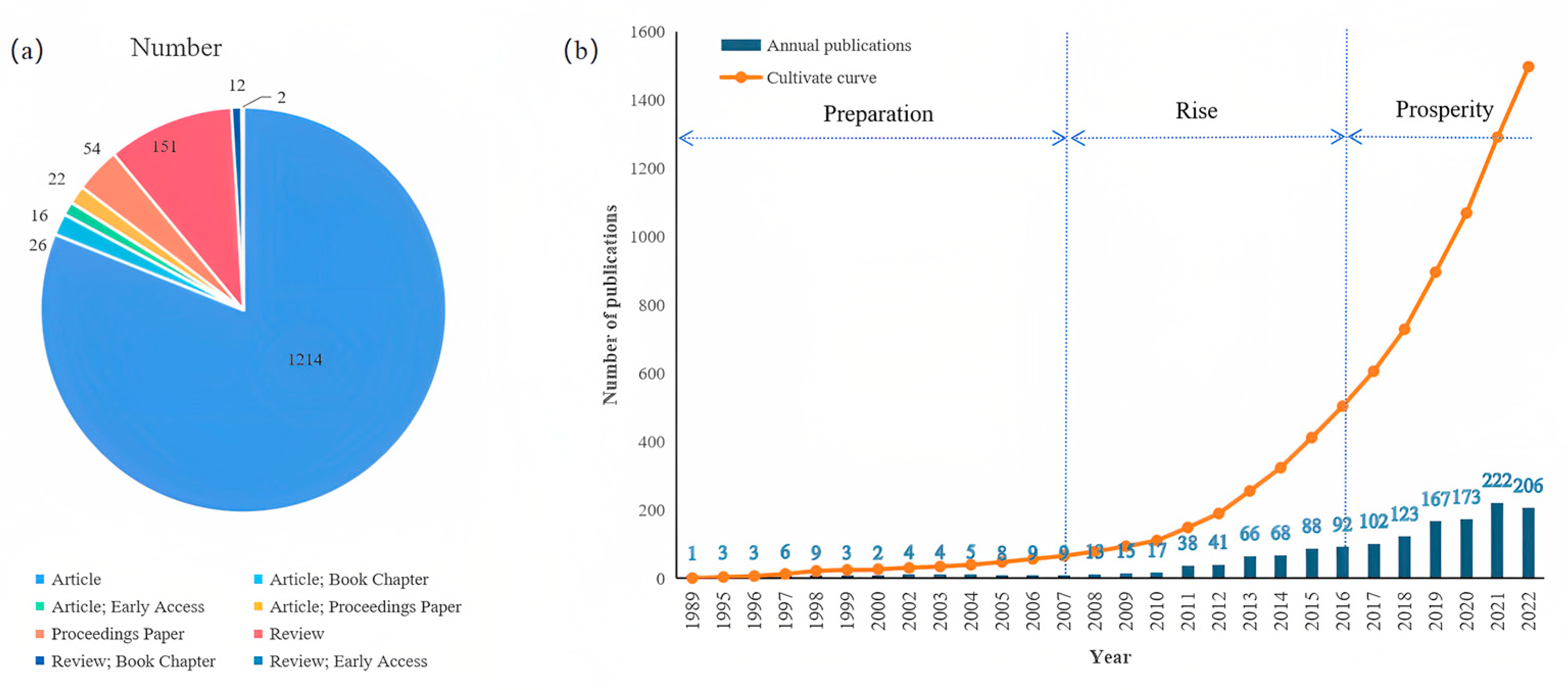


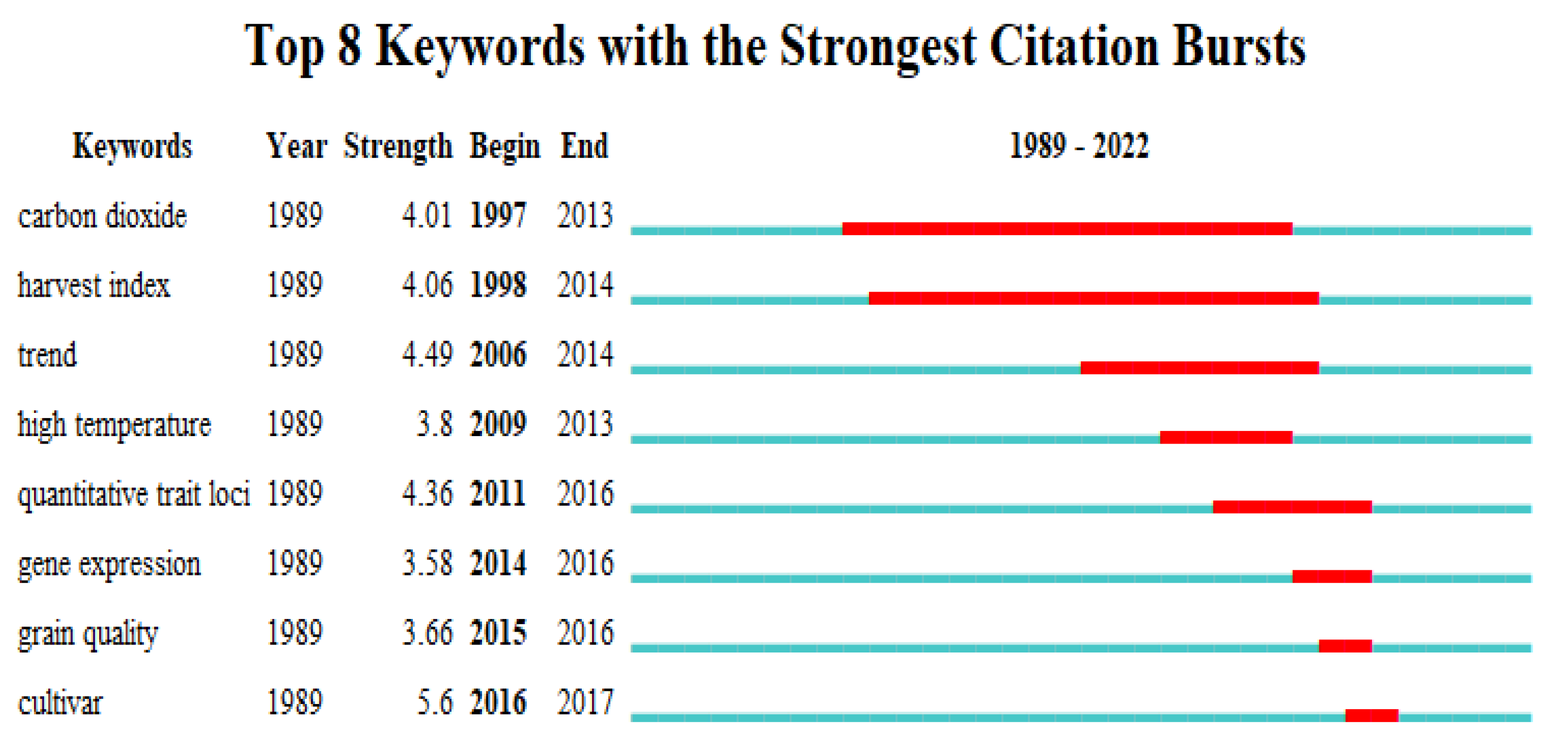
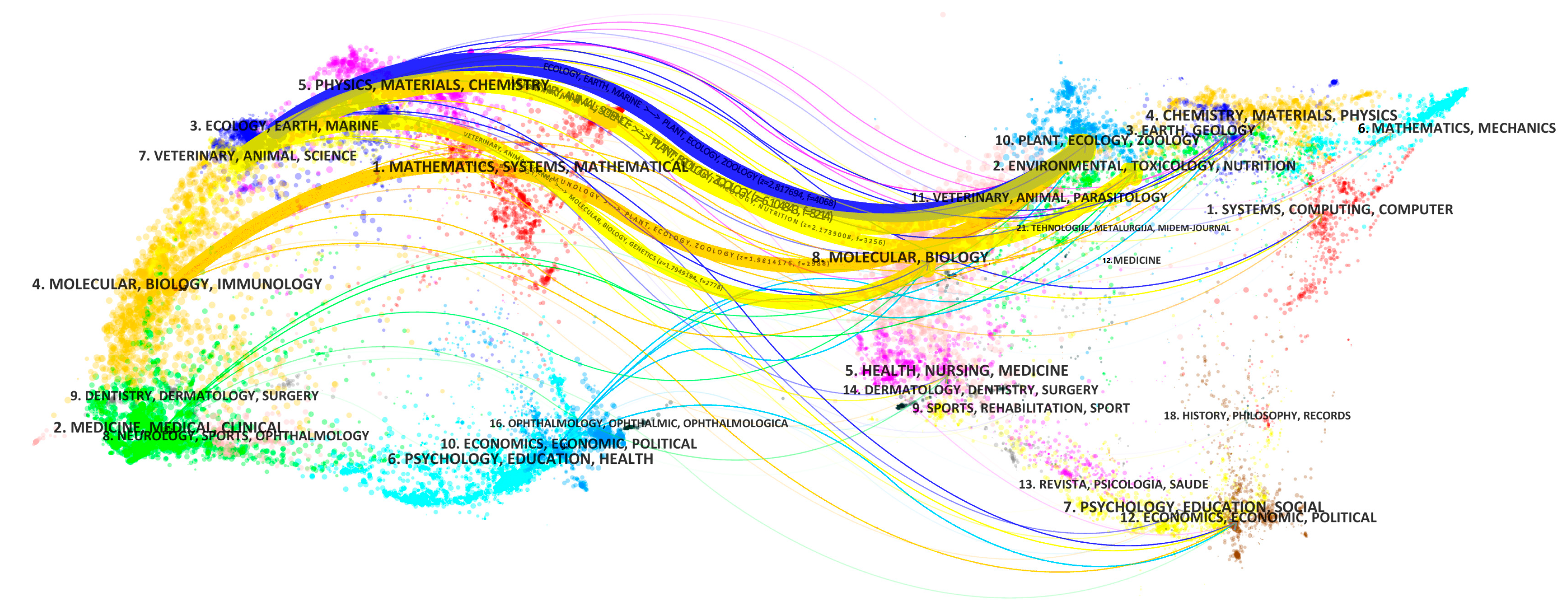
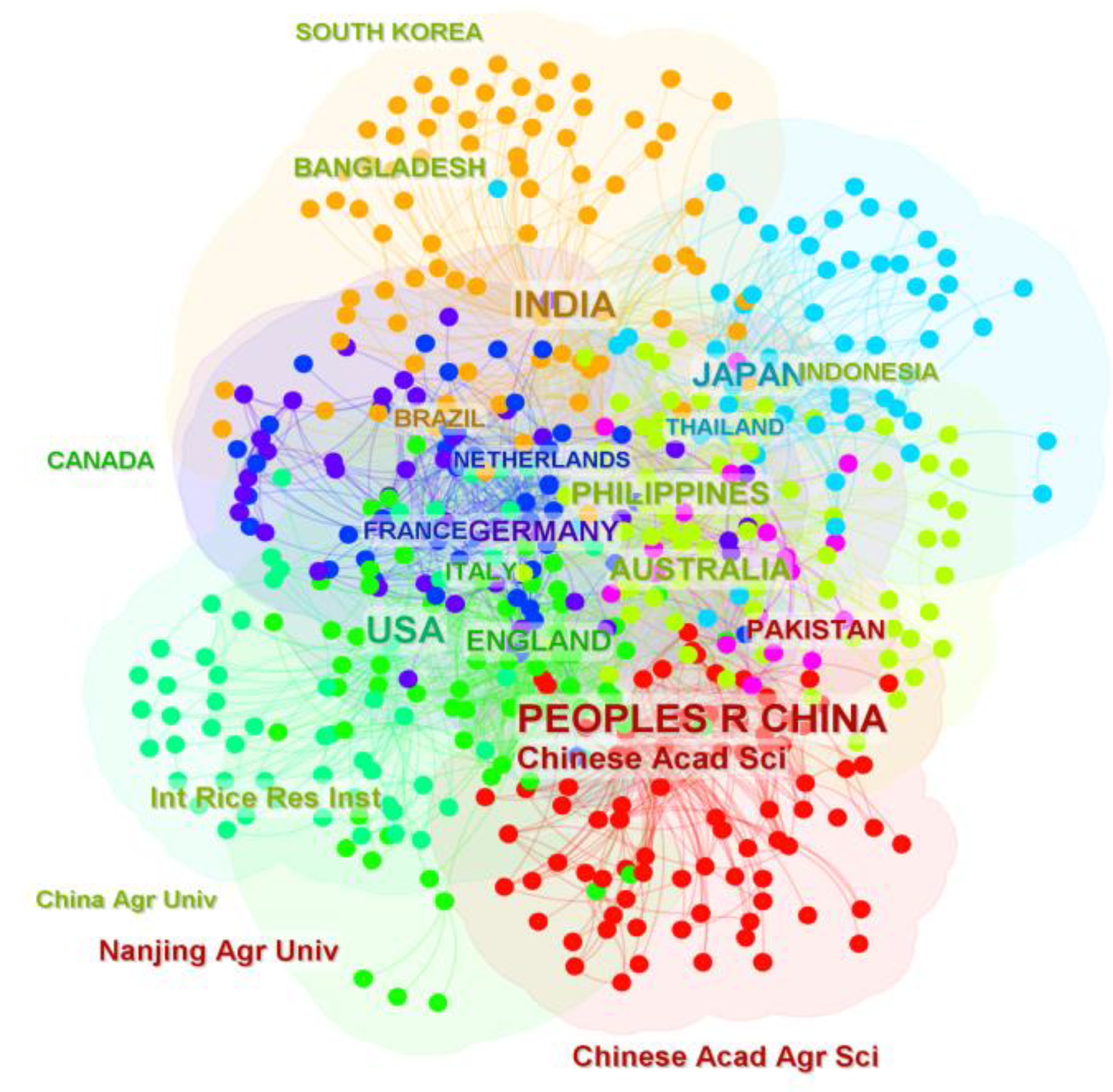
Disclaimer/Publisher’s Note: The statements, opinions and data contained in all publications are solely those of the individual author(s) and contributor(s) and not of MDPI and/or the editor(s). MDPI and/or the editor(s) disclaim responsibility for any injury to people or property resulting from any ideas, methods, instructions or products referred to in the content. |
© 2023 by the authors. Licensee MDPI, Basel, Switzerland. This article is an open access article distributed under the terms and conditions of the Creative Commons Attribution (CC BY) license (https://creativecommons.org/licenses/by/4.0/).
Share and Cite
Tang, L.; Wu, A.; Li, S.; Tuerdimaimaiti, M.; Zhang, G. Impacts of Climate Change on Rice Grain: A Literature Review on What Is Happening, and How Should We Proceed? Foods 2023, 12, 536. https://doi.org/10.3390/foods12030536
Tang L, Wu A, Li S, Tuerdimaimaiti M, Zhang G. Impacts of Climate Change on Rice Grain: A Literature Review on What Is Happening, and How Should We Proceed? Foods. 2023; 12(3):536. https://doi.org/10.3390/foods12030536
Chicago/Turabian StyleTang, Ling, Aoqi Wu, Shenshen Li, Mairemu Tuerdimaimaiti, and Guoyou Zhang. 2023. "Impacts of Climate Change on Rice Grain: A Literature Review on What Is Happening, and How Should We Proceed?" Foods 12, no. 3: 536. https://doi.org/10.3390/foods12030536
APA StyleTang, L., Wu, A., Li, S., Tuerdimaimaiti, M., & Zhang, G. (2023). Impacts of Climate Change on Rice Grain: A Literature Review on What Is Happening, and How Should We Proceed? Foods, 12(3), 536. https://doi.org/10.3390/foods12030536






